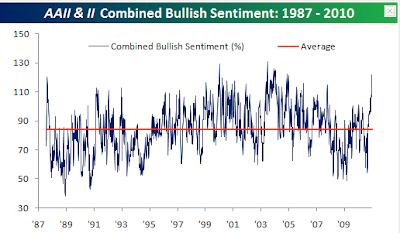Firms Hurting as Europe Slumps
Wall Street Journal
By CARI TUNA And ELLEN BYRON
12/7/2010
Multinational companies in a range of industries are seeing slowdowns in Europe and bracing for what could be many months of weakness.
Companies in the technology and health-care fields are under pressure from government efforts in Europe to cut costs, while consumer-goods makers have to contend with sluggishness in nations including Spain, Ireland and Greece. They are responding, in some cases, by cutting jobs and investments, steps that will themselves weigh on Europe's economic climate.
"There will be less people working, less people paying taxes, which will weigh further on government finances—all of this is linked to weakening economic growth," said Media Eghbal, a Western Europe analyst for market-research firm Euromonitor International Inc.
The euro-zone's economic growth slowed sharply in the third quarter, as business investment stalled, signaling that companies aren't confident enough to commit more capital. Spain's economy stagnated, and Greece's contracted. Pressure to cut public-sector spending is rising as government debt climbs.
"Central government budgets in many of the countries in Europe are being reduced dramatically," a spokesperson for Cisco said in a conference call with analysts. That factor, among others, led Cisco, which makes routers and switches that connect computers to the Internet and each other, to announce a weaker-than-expected sales forecast, sending its stock price tumbling over the past quarter.
OPINION-What Needs to Happen, But Most Likely Will Not (Jerry Wade)
Unless the U.S. does the right thing (start balancing the budget), which our elected officials have shown a clear lack of guts to do thus far, we will likely relapse into recession. In my opinion, we have never really left the current recession. What needs to happen as soon as possible in America is the following: - American households modify their lifestyles in such a way that they achieve positive vs. negative cash flow.
- American households modify their lifestyles in such a way that they quit spending from investments while still working and instead, start saving more for retirement..
- Federal Government makes the hard changes necessary to achieve positive vs. negative cash flow.
- State Governments makes the hard changes necessary to achieve positive vs. negative cash flow.
- Pension plans are restructured to provide lower current and future payouts, or risk running out of many for all current and future retirees.
- Social Security restructured to provide lower current and future payouts, or risk running out of money for all current and future retirees.
- Labor Union Benefit packages for millions of employees are restructured to provide lower current and future payouts, or risk running out of money for all current and future retirees.
- And yes, higher taxes, for a limited period of time, for all who earn an income.
The impasse we have seen thus far is the Republicans want to cut expenses and not raise taxes. The Democrats want to raise taxes and spend more money. The labor unions do not want any changes; pension plans are inept thus far at seeing that they have a problem; and the folks currently on Social Security and future recipients want nothing to do with any cuts.
Without shared sacrifice, across all the above groups,
the good old U. S. of A. will experience further financial collapse.
Investing LessonAt this point in time, it is prudent to err on the side of safety vs. taking too much investment risk.

 Well, Momma actually did not say that regarding investing, but yours truly did.
Well, Momma actually did not say that regarding investing, but yours truly did. Investing Lesson
Investing Lesson It has been decades since it first came out but Sean Connery as James Bond in the movie classic, Goldfinger, is back in vogue. When gold shows up on the front page of the New York Times, you know that a lot of the news is in the price (see TV ads running 24/7 and radio). We remain big fans of the yellow metal and still see potential for $2-3,000 an ounce over the next decade, as its hedging properties against the integrity of the global financial system will likely remain intact.
It has been decades since it first came out but Sean Connery as James Bond in the movie classic, Goldfinger, is back in vogue. When gold shows up on the front page of the New York Times, you know that a lot of the news is in the price (see TV ads running 24/7 and radio). We remain big fans of the yellow metal and still see potential for $2-3,000 an ounce over the next decade, as its hedging properties against the integrity of the global financial system will likely remain intact.